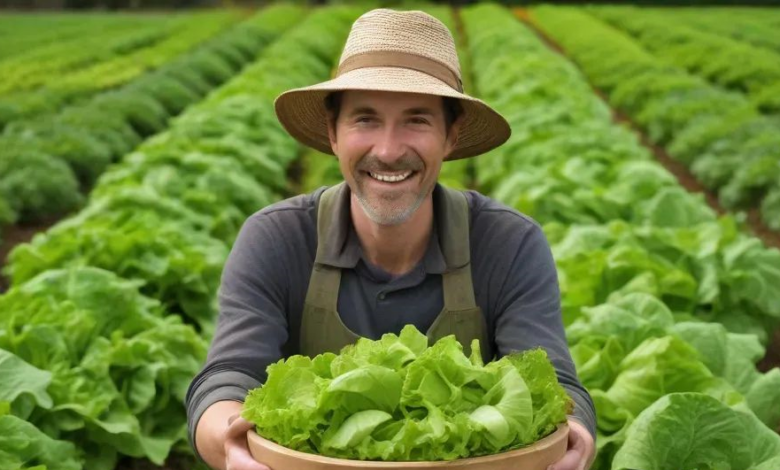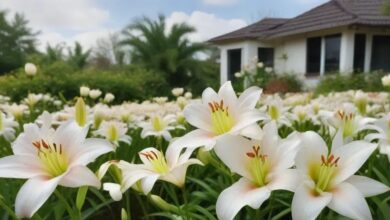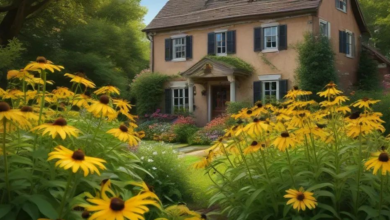A Comprehensive Guide to Growing Lettuce
Discover the ultimate guide to growing lettuce indoors, from selecting the perfect varieties to harvesting your bountiful greens.

The sharpness of lettuce grown indoors changes. Its crunchy texture and bright green hue make lettuce appealing and adaptable. In “Cultivating Crispness Indoors: A Comprehensive Guide to Growing Lettuce,” we help lettuce growers succeed.
Healthy lettuce is used in salads, sandwiches, and wraps and is easy to grow indoors. Indoor lettuce growth is fun year-round for urbanites with limited space or gardeners looking to improve.
Choose lettuce varieties and containers, optimize lighting, temperature, and humidity using this advice. Growers of all abilities can use hydroponics and soil-based systems.
Pest and disease management are taught to lettuce growers to ensure healthy crops. Step-by-step instructions and practical advice let indoor gardeners grow lettuce from their own gardens and enjoy its freshness and flavor. Come learn how to grow crispness inside, whatever of your gardening expertise.
Understanding Lettuce Varieties for Indoor Cultivation
With its many types, lettuce provides indoor gardeners a variety of flavors, textures, and colors. A successful indoor lettuce crop depends on choosing the correct types.

| Lettuce Type | Characteristics | Popular Varieties for Indoor Cultivation |
|---|---|---|
| Loose-Leaf | Grows quickly; tender leaves; vibrant colors | Red Sails, Black Seeded Simpson |
| Butterhead | Delicate, buttery leaves; compact heads; exquisite flavor | Buttercrunch, Bibb |
| Romaine | Long heads; crisp texture; small but bountiful yield | Parris Island Cos, Little Gem |
| Microgreens | Quick growth; ideal for limited space; adds flavor and nutrition to various dishes | Fresh lettuce microgreens from cotyledon stage |
1. Loose-Leaf Lettuce
Cutting and loose-leaf lettuces grow quickly and have sensitive leaves. Red Sails and Black Seeded Simpson provide vibrant greens indoors.
2. Butterhead Lettuce
Butterhead lettuce: Home gardeners adore butterhead lettuces’ delicate, buttery leaves and exquisite flavor. Indoor-growing Buttercrunch and Bibb variants have compact heads.
3. Romaine Lettuce
Romaine lettuce: Long heads and crisp texture make it suitable for indoor gardening. A small but bountiful yield comes from container favorites Parris Island Cos and Little Gem..
4. Microgreens
Microgreens are ideal for busy people or those with limited space because they are healthful and easy to grow inside. Fresh lettuce microgreens from the cotyledon stage give taste and nutrition to salads, smoothies, and soups.
Preparing the Perfect Growing Environment
Optimal conditions are needed for indoor lettuce cultivation. Growers can optimize lettuce development by monitoring sunlight, temperature, humidity, and airflow.

| Condition/Practice | Details |
|---|---|
| Choose the Right Containers | Use hydroponic systems or pots with drainage holes; clean and sterilize containers; avoid overcrowding |
| Select the Proper Growing Medium | Water when the top inch of soil is dry; avoid overwatering; water lightly with a twig bottle or pail |
| Provide Ample Lighting | Ensure plenty of light; use grow lights in low-light conditions; LED grow lights are recommended |
| Maintain Optimal Temperature and Humidity | Keep temperatures between 60°F to 70°F (15°C to 21°C); monitor with a thermometer to prevent extremes |
| Water Wisely | Water when the top inch of soil is dry; avoid watering the potting mix; water lightly to prevent rotting |
| Fertilize Appropriately | Use diluted, balanced, water-soluble fertilizer after 3 weeks; consider natural options like fish emulsion or compost |
1. Choose the Right Containers
Container Selection and Setup: Use hydroponic systems or pots with drainage holes to avoid waterlogging. Clean and sterilize containers before planting to reduce disease risk. Overcrowding containers can restrict airflow, so arrange them to maximize room and light.
2. Select the Proper Growing Medium
Water plants when the top inch of soil is dry, but avoid moistening the potting mix. To prevent rotting, water plants lightly with a twig bottle or pail. Stay away from watering plants.
3. Provide Ample Lighting
Lighting: Indoor lettuce needs lots of light. While natural sunshine is best, grow lights can provide steady and sufficient illumination in low-light locations. LED grow lights are energy-efficient and provide full spectrum light for lettuce development.
4. Maintain Optimal Temperature and Humidity
Cooler temperatures are best for lettuce, 60°F to 70°F (15°C to 21°C). Extreme heat or cold can limit development or cause bolting. Monitoring growth area temperature with a thermometer helps maintain optimal conditions.
5. Water Wisely
Water the plant when the top inch of soil is dry, but avoid watering the potting mix. Water plants lightly with a twig bottle or pail to prevent rotting. Carefully avoid watering plants.
6. Fertilize Appropriately
Dilute a balanced, water-soluble fertilizer to half strength after 3 weeks. Feeds lettuce plants. Natural fertilizers like fish emulsion or compost are another green option.
Planting and Nurturing Lettuce Indoor
After priming and organizing your indoor garden, begin planting. Follow those guidelines for a plentiful crop whether you’re sowing seeds or seedlings.

1. Starting from Seeds
Press lettuce seeds gently into the potting blend to spread them. Cover the seeds with potting blend and moisten. Keep the soil moist during the germination phase, which can take 7–14 days (depending on kind).
2. Transplanting Seedlings
Seedlings should be gently removed from nursery pots without damaging the roots. Make sure the potting mix is deep enough to hold seedling root balls before planting. Place the seedlings in the holes and squeeze the soil around their bases. Water the dirt so it settles and the roots may grow in their new home.
Caring for Your Indoor Lettuce Garden
It is critical to give your lettuce plants the attention and care they require once they are planted. In order to successfully grow lettuce indoors, consider the following advice:
1. Provide Adequate Light
By using grow lights or placing your plants in sunny settings, you can ensure they will grow as expected.
2. Maintain Proper Watering
If the top inch of soil seems dry, water your lettuce plants. Keep an eye on soil moisture and water lettuce plants when you notice it.
3. Monitor Temperature and Humidity
To ensure your lettuce plants are thriving in a healthy environment, check the temperature and humidity levels and make any required modifications.
4. Fertilize Regularly
A well-balanced fertilizer applied every two to three weeks can maximize lettuce plant development. The plants can flourish to their full potential.
5. Prune and Harvest Appropriately
If necessary, remove yellowing or broken leaves and harvest the outer leaves when they reach the right size. Because of this, the plant will be encouraged to grow uninterrupted.
6. Harvesting the Fruits of Your Labor
Once the lettuce plants are mature, you can enjoy eating them to appreciate your indoor lettuce cultivation efforts. This process ensures that lettuce you buy is fresh and tasty.
7. Leaf Lettuce
It is best to take the leaves as needed, starting with the tips and letting the main leaves grow.
8. Butterhead and Romaine Lettuce:
It is not necessary to harvest the entire plant head until maturity, which usually occurs 45–60 days after planting. The plant must reach its potential. Sharp knives are needed to separate the plant’s crown from its base. Remember that the roots should not be cut to use them for future development. This should always be considered.
9. Microgreens
Microgreen lettuce is harvested when the cotyledon leaves are fully developed, usually seven to fourteen days after seeding. This usually happens when microgreen lettuce is mature. Cutting microgreens just above the earth lets the living plants develop and produce new harvests. This keeps the plants harvesting abundantly.

Conclusion
Lettuce is the most versatile and productive crop for indoor growing. This comprehensive guide will help you grow a successful lettuce garden at home. Following the instructions will allow you to harvest fresh greens year-round. You must pay close attention to every part of your indoor lettuce project to succeed. This includes choosing the right plants and caring for them. Get your hands messy with potting mix and start growing freshness in your home garden. You should start now. May you grow happily.







